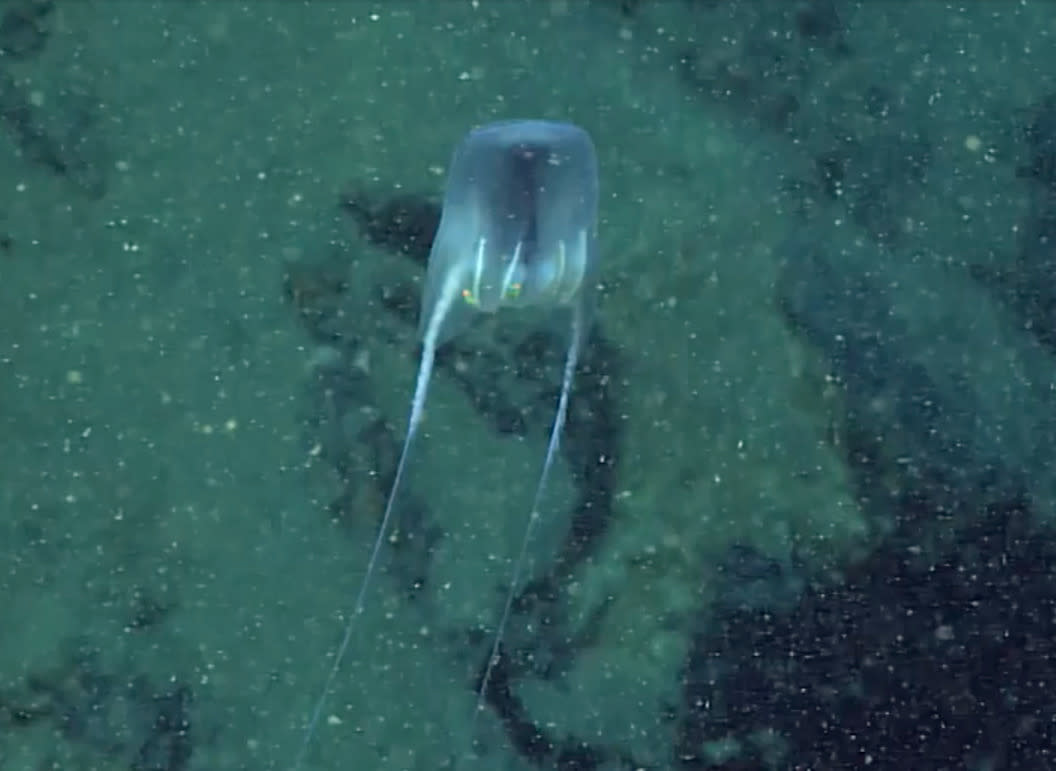New species of deep-sea comb jelly that ‘moves like hot air balloon attached to ocean floor’ discovered

Scientists have discovered a new species of comb jelly in deep underwater trenches off the coast of Puerto Rico that they said was observed moving like a hot air balloon tethered to the seafloor.
Researchers from the US scientific agency, the National Oceanic and Atmospheric Administration (NOAA), discovered the new species of ctenophore using underwater cameras.
The gelatinous animal, named Duobrachium sparksae, was located 4 kilometres below the surface and could only be observed by a remotely operated vehicle (ROV), which beamed high-definition footage back to the research team.
After studying the video, which was filmed in 2015, the scientists observed unusual behaviour. “The ctenophore has long tentacles, and we observed some interesting movement,” said NOAA fisheries scientist Mike Ford, who, along with colleague Allen Collins, spotted the comb jelly and recognised it as a new species.
“It moved like a hot air balloon attached to the seafloor on two lines, maintaining a specific altitude above the seafloor.
“Whether it’s attached to the seabed, we’re not sure. We did not observe direct attachment during the dive, but it seems like the organism touches the seafloor.”
He added: “We saw the species three times in a relatively small area; hopefully that means they’re not extremely rare.”
The discovery marks the first time NOAA scientists have relied on high-definition video alone to describe a new creature, as no physical samples were collected.
Although they look similar, comb jellies and jellyfish are not closely related.
Most comb jellies have eight rows of comb-like cilia that rhythmically beat, refracting light into colors, as they move through the water. There are between 100–150 known species of comb jellies.
“We didn’t have sample collection capabilities on the ROV at the time,” said Mr Collins.
“Even if we had the equipment, there would have been very little time to process the animal because gelatinous animals don’t preserve very well; ctenophores are even worse than jellyfish in this regard.
“High-quality video and photography were crucial for describing this new species.
“Some insect species descriptions have been done with low-quality imagery and some scientists have said they don’t think that’s a good way of doing things.
“But for this discovery we didn’t get any pushback. It was a really good example of how to do it the right way with video.”
Read More
Jelly-fish like creatures surprise beachgoers by washing up on shore

 Yahoo News
Yahoo News 
